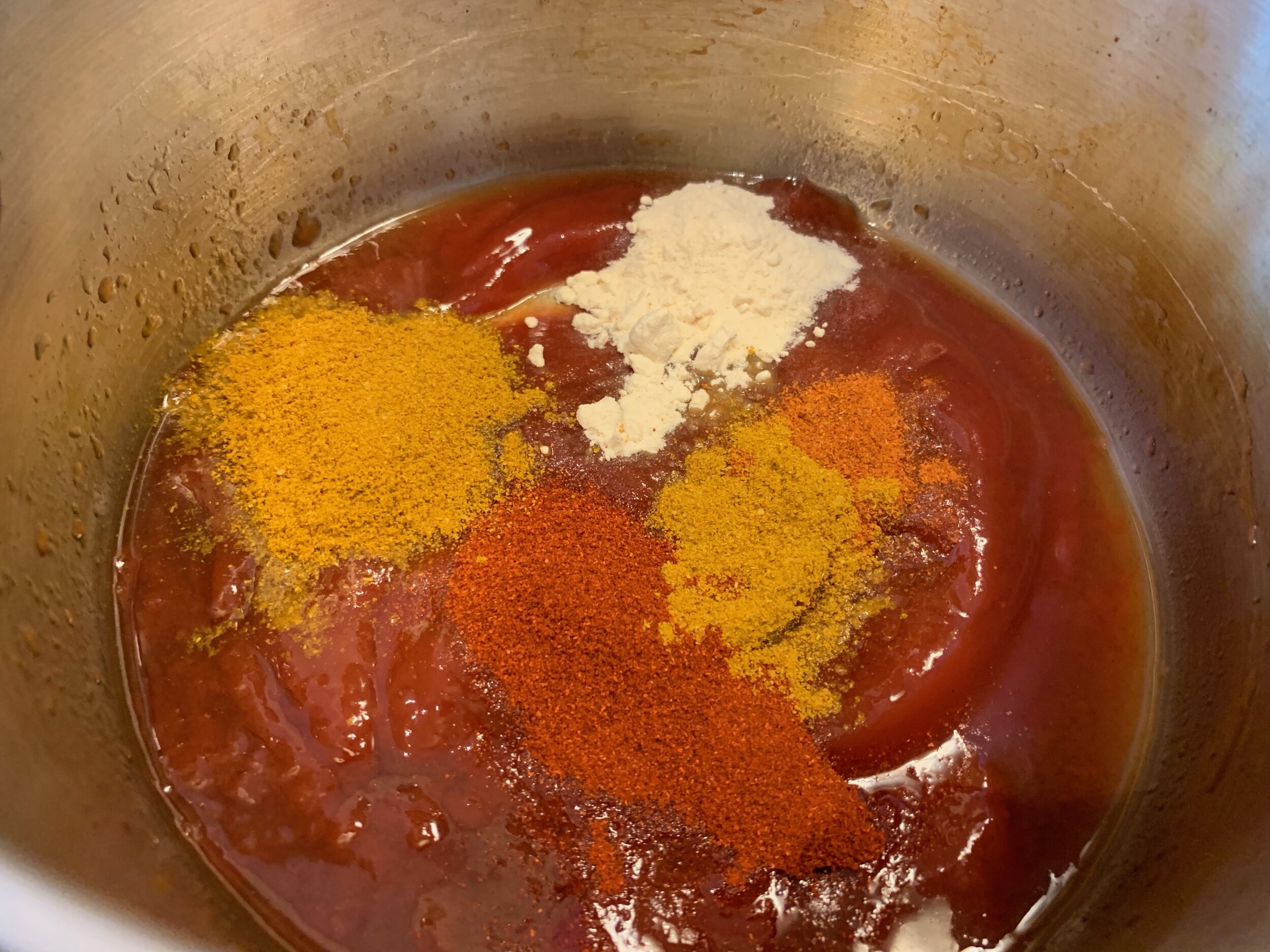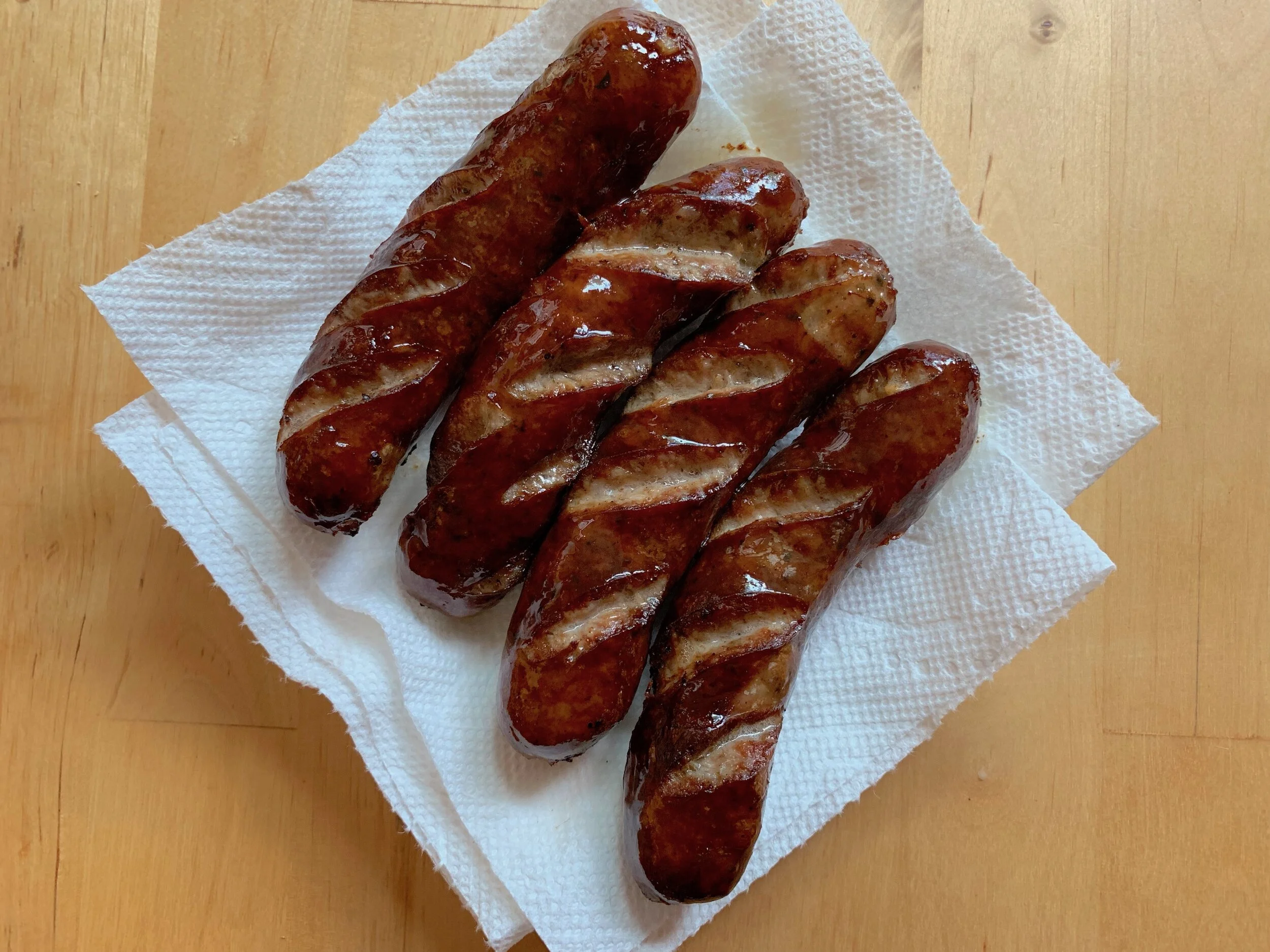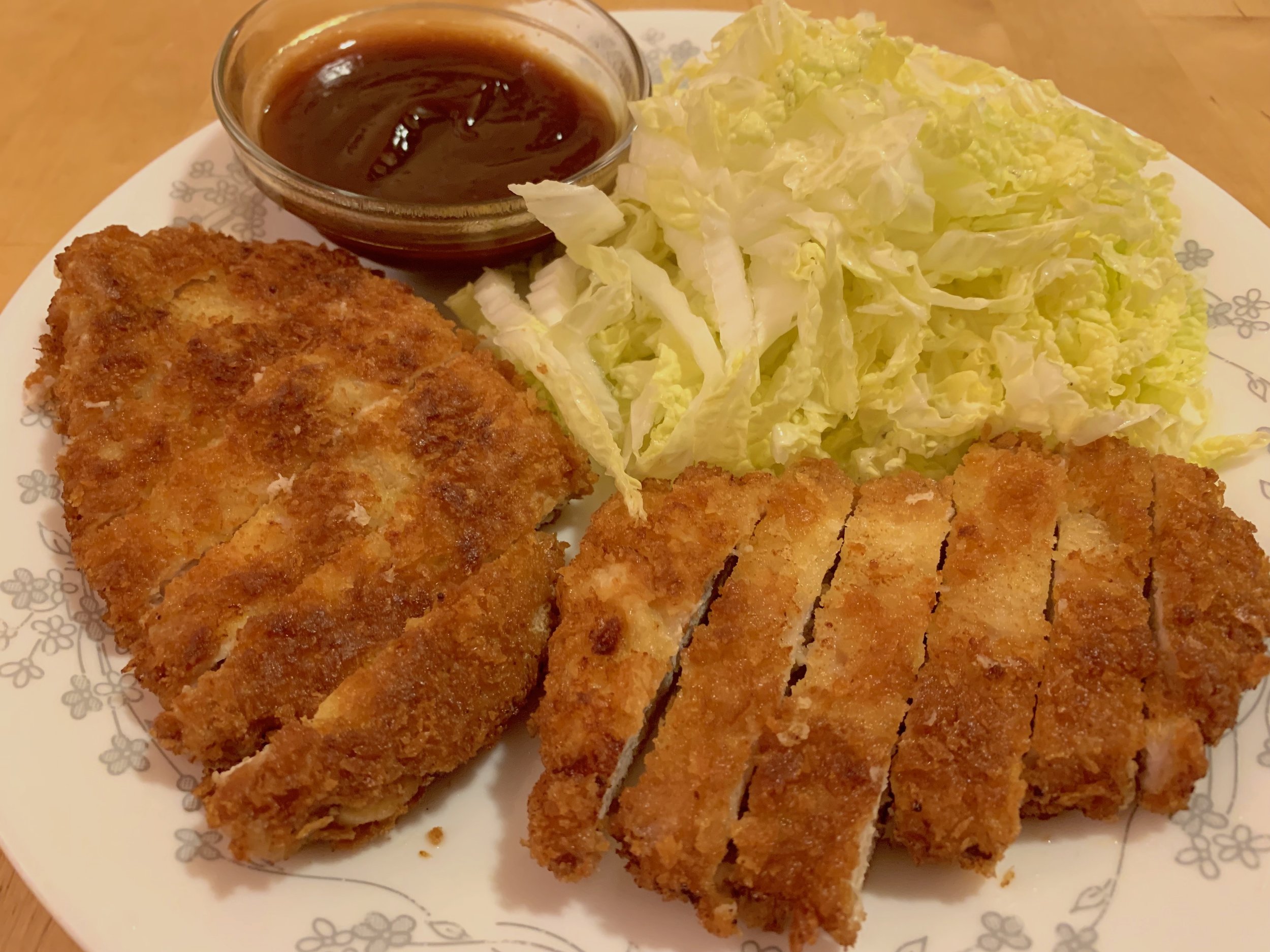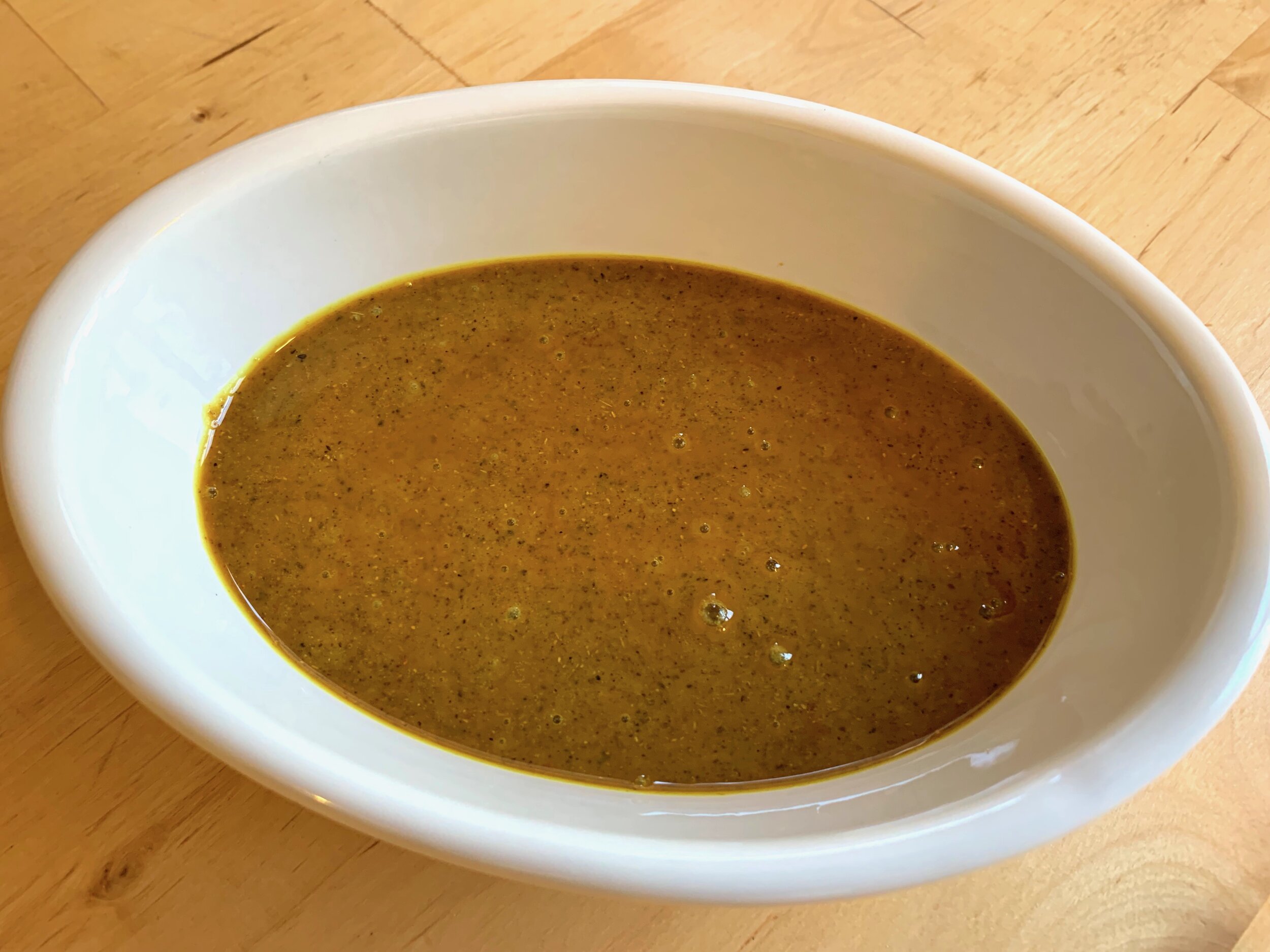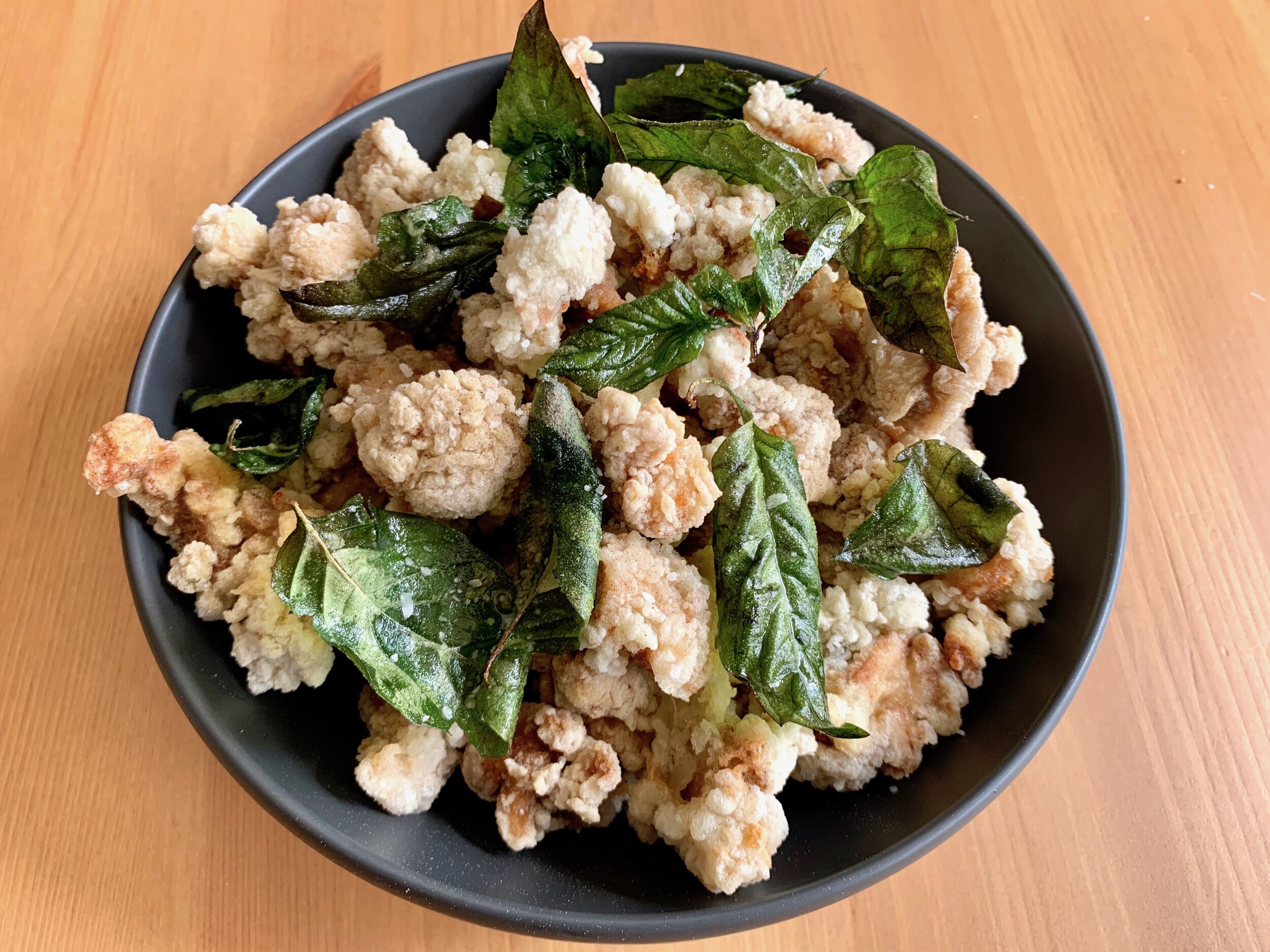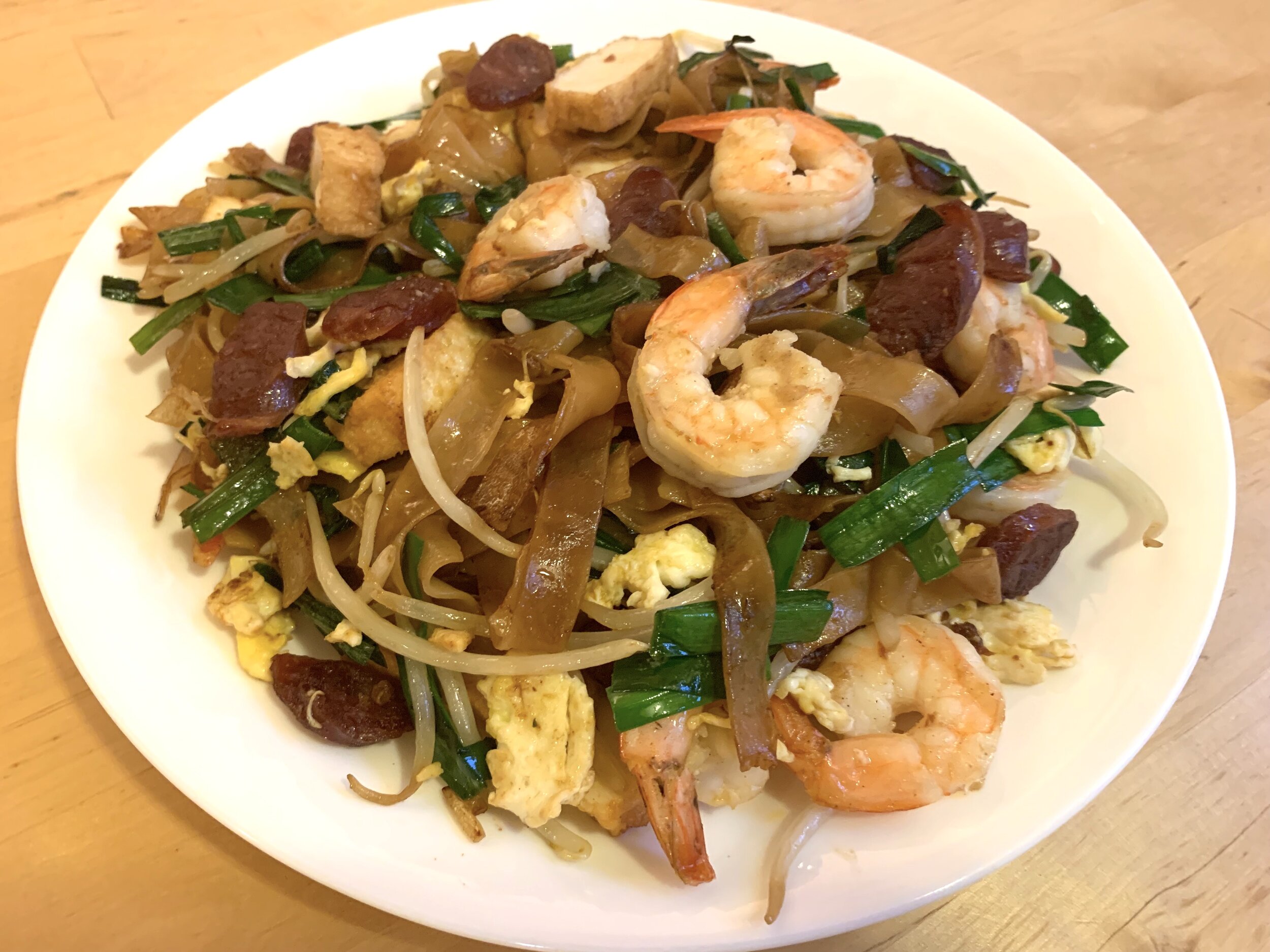Currywurst
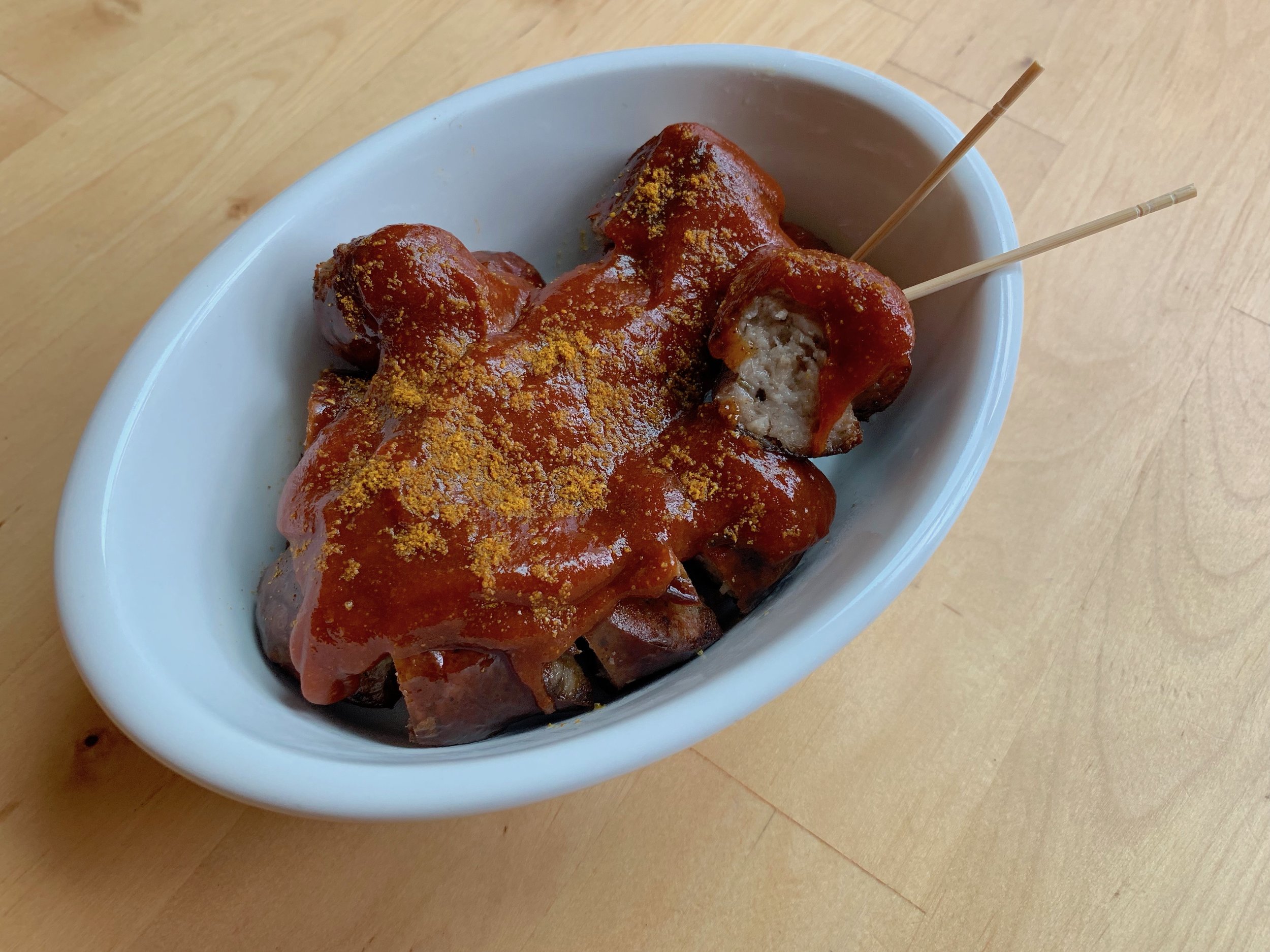
Currywurst is an iconic Berlin street food, crispy pieces of sausage smothered in a sweet and spiced sauce. [1][2] Its invention is often credited to Herta Heuer, the owner of a street stand in Berlin. While currywurst features German bratwurst sausage, it also features some distinctly foreign ingredients—ketchup from the United States, Worcestershire sauce and curry powder from Great Britain, and French fries on the side.
How these ingredients came together is no coincidence. To understand the origins of currywurst, we must look to the year of its invention: 1949, the year of the Berlin airlift. At the end of World War II, Germany was occupied by the victorious Allies and the country was divided between the Americans, British, French, and Soviets. Despite being deep in the Soviet zone, Berlin was divided amongst the powers due to its significance as the capital of the Third Reich. In 1948, as the Iron Curtain descended upon Europe, the Soviet Union blocked off road and rail access to West Berlin from the rest of West Germany in an attempt to drive the Western Allies from Berlin. In response, the United States Air Force, Royal and Commonwealth Air Forces, and French Air Force launched one of the largest airlifts in history, flying in food and fuel into the surrounded city.
On the left, a map of the 4 occupation sectors of Berlin after WWII. The French, British, and American sectors were merged to form West Berlin, while the Soviet sector became East Berlin. On the right, a USAF C-54 cargo plane on approach to Berlin’s Tempelhof airport in 1948, at the height of the Berlin airlift. Allied air forces flew 2.3 million tons of supplies into the blockaded city in 1948-49, keeping West Berlin free from communist control.
For the year of the airlift, much of the food coming into West Berlin came in the form of packaged products from the United States and Britain, including ketchup, curry powder, and Worcestershire sauce. Local cooks made do with the ingredients at hand, created several new dishes, including currywurst. This simple dish, combining traditional food with global ingredients, reflects Germany’s search for a postwar identity—a nation attempting to move beyond its dark and traumatic past and find a place in the wider European community.
Ingredients
1 lb bratwursts
½ cup ketchup
1 tsp Worcestershire sauce
1 tbsp yellow curry powder
1 tsp onion powder
1 tsp smoked paprika
¼ tsp cayenne pepper
2 tbsp water
Vegetable oil
To make the currywurst sauce, combine in a saucepan half a cup of ketchup with 1 tsp Worchestershire sauce and 2 tablespoons of water. Then add the ground spices—2 teaspoons of yellow curry powder, 1 tsp onion powder, 1 tsp smoked paprika, and cayenne pepper to taste.
Stir well and bring the sauce to a simmer over low heat. Simmer the sauce for 5 minutes, stirring constantly, until the spices have cooked through and the sauce is uniform. Remove the sauce from the heat and cover to keep the sauce warm.
In the meantime, bring a pot of water to a gentle boil and cook the bratwursts to the package instructions. Once the bratwursts are fully cooked, drain them. You can finish the bratwursts by grilling or pan-frying and serve them with the currywurst sauce, but the method of preparation most common on the streets of Berlin is shallow-frying, which crisps the edges of the sausage.
In a pot wide enough to hold all of the bratwursts in a single layer, bring ½ an inch of oil to 350° F. While the oil comes up to temperature, pat the sausages dry, and cut several diagonal slits on each side of the sausages. This prevents the casings from bursting when fried.[3]
Fry the sausages for 5-6 minutes per side, turning once, until they are browned and crisp, about 10 minutes total. Drain the sausages on paper towels and slice into rounds. Top the sausage rounds with the currywurst sauce, and sprinkle over the remaining yellow curry powder. Serve immediately with a roll or French fries on the side, if desired.
Substitutions
You can use any mild, finely textured sausage in this dish. In some parts of Germany, a smoked sausage similar to kielbasa is used for currywurst. If you don’t have smoked paprika, you can substitute regular paprika. Adjust the spiciness of the sauce to your taste by adjusting the amount of cayenne pepper in the recipe.
[1] Every postwar mayor of Berlin has been photographed at a currywurst stand.
[2] Volkswagen’s Wolfsburg plant is the largest manufacturing plant in the world, producing 800,000 cars a year. The plant has its own butchery which produces 7 million servings of currywurst annually for its employees.
[3] Currywurst spread in the late 50s and early 60s from West Germany to East Germany. However, cased sausages were rare in East Germany, with most sausages packaged in parchment paper. East German currywurst was therefore made with caseless sausage meat. Today, many currywurst stands in Berlin offer both cased and caseless versions of currywurst.
Recipe
Prep Time: 5 min Cook Time: 15 min Total Time: 20 min
Difficulty: 3/5
Heat Sources: 2 burners
Equipment: pot, saucepan
Servings: 4
Ingredients
1 lb bratwursts
½ cup ketchup
1 tsp Worcestershire sauce
1 tbsp yellow curry powder
1 tsp onion powder
1 tsp smoked paprika
¼ tsp cayenne pepper
2 tbsp water
Vegetable oil
Instructions
1. In a pot of water, boil the bratwursts per package instructions until fully cooked. Remove the sausages from the water and let cool.
2. In a saucepan, combine the ketchup, Worcestershire sauce, 2 tsp curry powder, onion powder, smoked paprika, cayenne pepper, and 2 tbsp water. Mix well and simmer over low heat for 5 min, until the sauce is uniform. Remove the sauce from the heat.
3. Pat the bratwursts dry, and cut several diagonal slits on each side of the sausage. In a pot large enough to hold the bratwursts, bring ½ an inch of oil to 350° F. Shallow-fry the bratwursts for 5-6 minutes per side, about 10 minutes total, until the skins are browned and crisp.
4. Slice the fried bratwursts into rounds, and top with the currywurst sauce. Sprinkle the remaining tsp of yellow curry powder atop the sauce, and serve.




